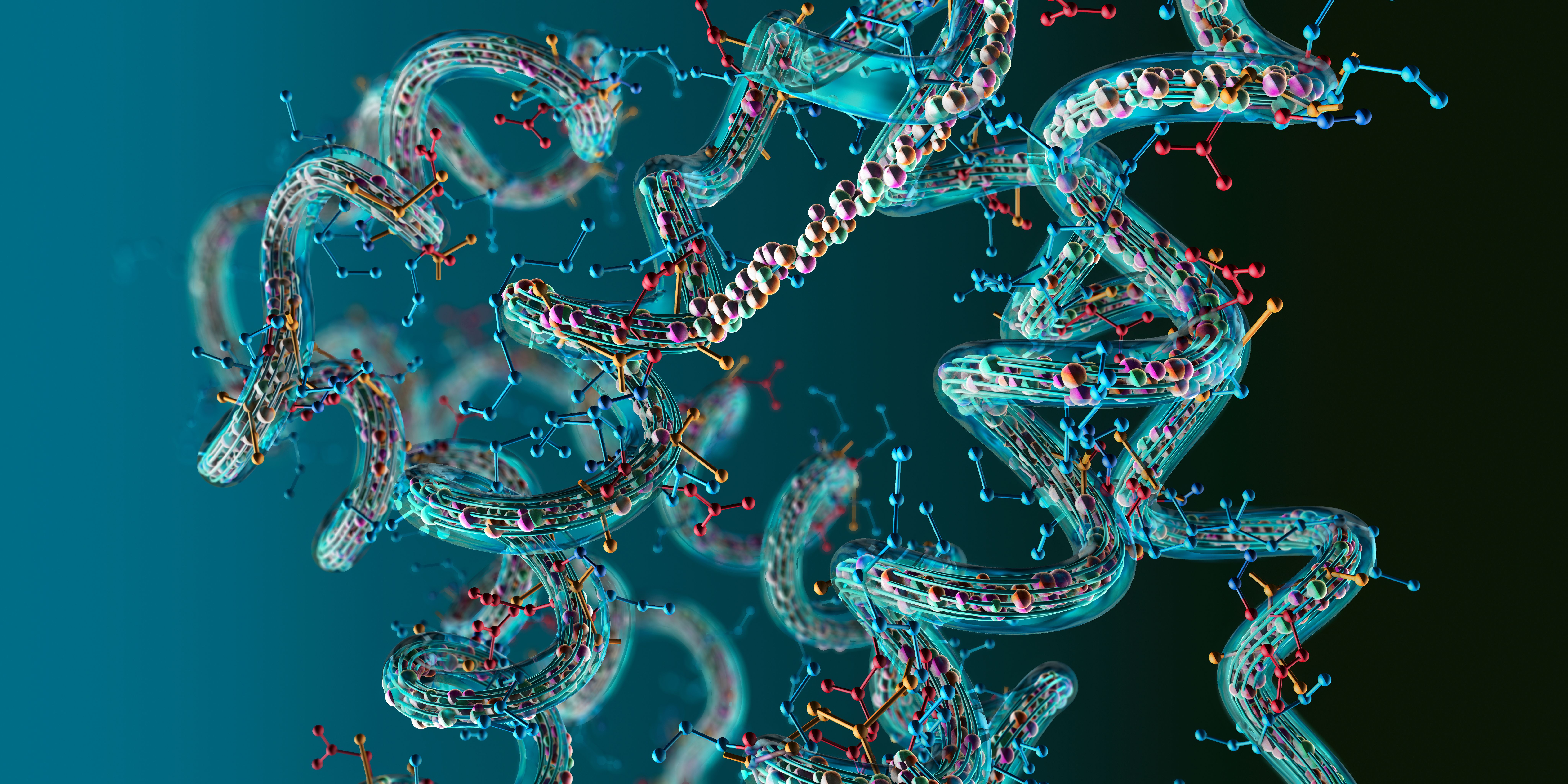Investigating Phosphatidylinositols Using LC–MS/MS Techniques
A recent study, published in the Journal of Chromatography A, used different C18 high-resolution LC–MS/MS approaches to characterize the signatures of nitrated and nitroxidized phosphatidylinositols (PIs) chains (1).
Chain of amino acid or bio molecules called protein - 3d illustration | Image Credit: © Christoph Burgstedt - stock.adobe.com

PIs, which are a class of phospholipids (PLs), are essential to different cellular functions, such as vesicle trafficking, mRNA export from the nucleus, signal transduction, glycolipid anchoring of proteins, and second messenger storage. They are crucial to biological functions within cell membrane, in addition to being building blocks for creating inositol polyphosphates, phosphoinositide’s, sphingolipids, and glycophosphoinositol.
Like other phospholipids, unsaturated fatty acyl residues (FAs) are used to esterify PIs, thus rendering it easier for reactive oxygen and nitrogen species (RNS) to modify them. There have been studies where mass spectrometry-based lipidomic approaches have showed lipid nitration resulting in many structurally and chemically altered lipids, known as epilipids. Some known epilipids include nitrated and nitroxidized derivatives of phosphatidylcholines, phosphatidylethanolamines, phosphatidylserines, and cardiolipins. These were discovered using a variety of lipidomic approaches that combine both liquid chromatography (LC) and tandem mass spectrometry (MS/MS).
“The identification of specific fragmentation pathways and reporter ions of these modified PIs are key to supporting their accurate identification in complex lipid mixtures extracted from biological samples and revealing their putative physiological roles,” the authors of the study wrote.
The study used an in vitro biomimetic model system to promote the nitration of PIs using nitronium tetrafluoroborate (NO2BF4). The PI derivatives, both nitrated and nitroxidized, were analyzed by combining C18 reversed-phase high-performance liquid chromatography, electrospray ionization (ESI) high-resolution mass spectrometry (C18-HPLC-ESI-HR-MS) and tandem mass spectrometry.
The scientists were able to identify nitro- PI derivatives, dinitro- and nitrohydroxy- derivatives for a few PI species. Scientists were able to determine the various circumstances that go into identifying nitrated PIs.
When investigating how susceptible PIs are to nitration, scientists concluded that the answer depends on the status of the chains belonging to unsaturated FAs esterified in PI; in fact, for FAs with a ratio of C18:1, the conversion rate was higher.
The fragmentation rules can help enable in silico spectral matching approaches, creating new opportunities to investigate the epilipids’ roles at the cellular and tissue levels.
Reference
(1) Bonciarelli, S.; Neves, B.; Domingues, P.; Melo, T.; Goracci, L.; Domingues, M. R. Analysis of Phosphatidylinositol Modifications by Reactive Nitrogen Species Using LC-MS: Coming to Grips with Their Nitroxidative Susceptibility. J. Am. Soc. Mass Spectrom. 2023, 34 (7), 1372-1382. DOI: https://doi.org/10.1021/jasms.3c00057
New Method Explored for the Detection of CECs in Crops Irrigated with Contaminated Water
April 30th 2025This new study presents a validated QuEChERS–LC-MS/MS method for detecting eight persistent, mobile, and toxic substances in escarole, tomatoes, and tomato leaves irrigated with contaminated water.
Accelerating Monoclonal Antibody Quality Control: The Role of LC–MS in Upstream Bioprocessing
This study highlights the promising potential of LC–MS as a powerful tool for mAb quality control within the context of upstream processing.

.png&w=3840&q=75)

.png&w=3840&q=75)



.png&w=3840&q=75)



.png&w=3840&q=75)


